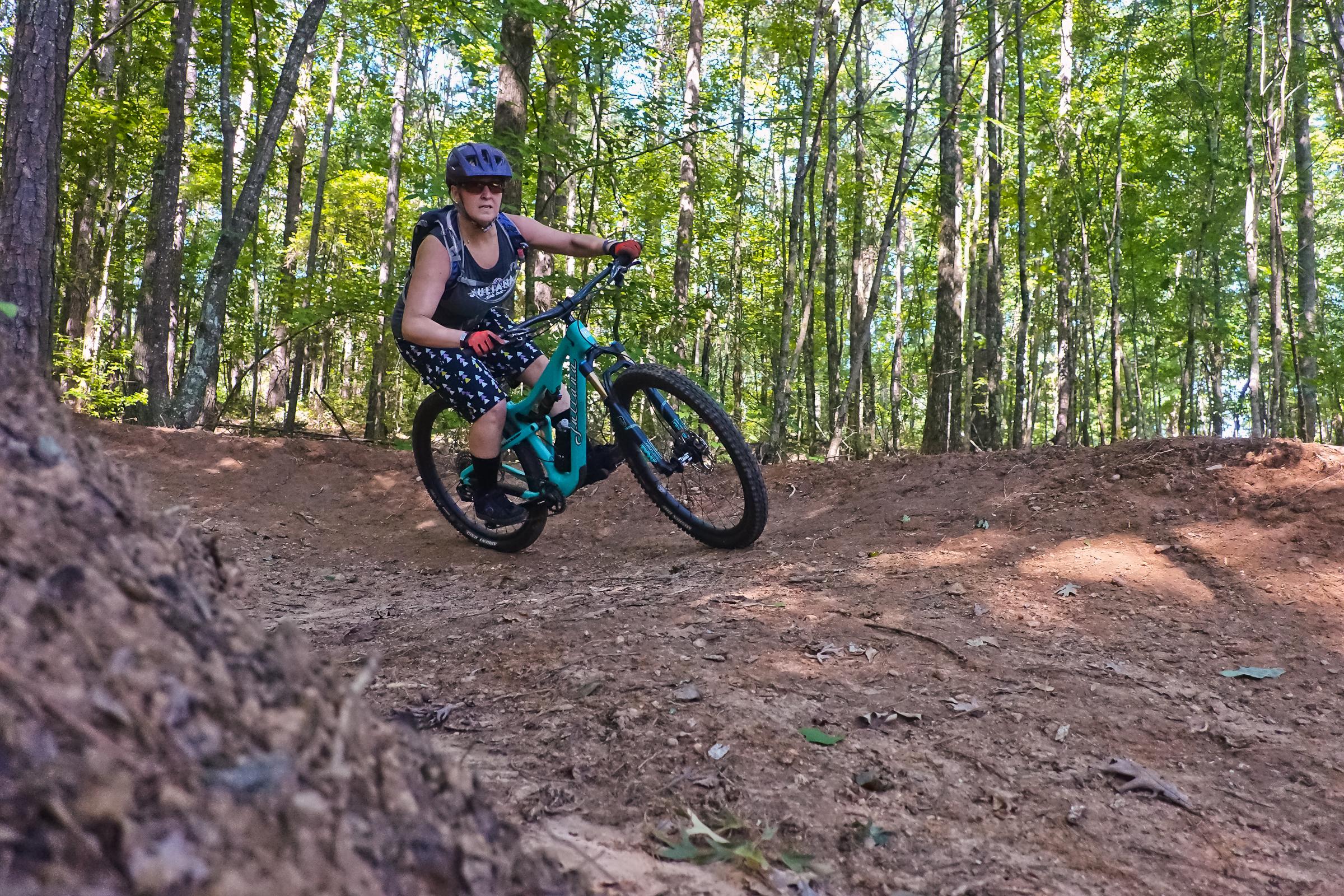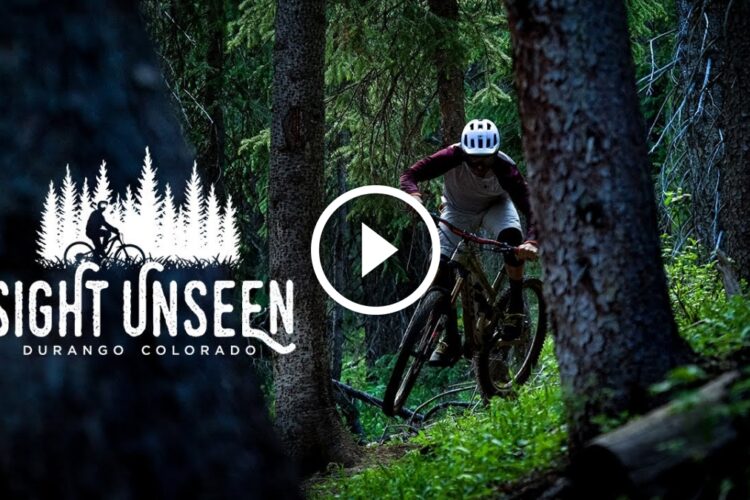
In a Ted Talk video, violinist Diane Allen asks the audience about the last time any of them experienced a flow state. It’s a question all of us should be asking ourselves. When was the last time any of us were able to get into a flow state? Has it been a while, and shouldn’t it be more often? Mountain bikers will recognize the flow state as the moments where everything “clicks” on the trail. Your hips move up fluidly over bumps and rollers and cut to the side without a conscious effort or second guessing where your tires are around a turn.
Jumps are easily cleared, drops are conquered, speed is carried. Usually, it feels like the perfect ride and it’s what hooks many of us to chase the trail dragon.
“It’s really an altered state of consciousness, it’s a mental state,” says Dr. Taryn Forelli of Flume Formulas. “It’s this idea of effortlessly moving and thinking. Your mind and body are one.” Forelli recently developed a supplement to help people find their flow and I wanted to learn more from her about what the flow state is, what’s happening, and how mountain bikers can get into it more often.
What is the ‘flow state’ anyway?

“It is, for many people, the reason why we engage in these sports,” says Forelli. “You can pretty much block out the rest of the stress in your life and experience pure joy.”
The idea of the flow state goes back to researcher Mihaly Csikszentmihalyi, a researcher and co-founder of the positive psychology school of thought. After researching happiness and and interviewing athletes, musicians, and artists he developed the term ‘flow state,’ as something that describes the feeling that comes in an optimal state when performance “flows” without effort.
He outlined eight characteristics of flow:
- Deep concentration on a task
- Clear goals and immediate feedback
- Balance between skills and the challenge
- The feeling of control
- The experience is intrinsically rewarding (the joy of the task is not externally motivated)
- Effortlessness
- An altered perception of time
- Action and awareness merge (a loss of self-critique)
Forelli adds a little more context. “You’re not self-critiquing every move you make. You’re being dosed with these feel-good chemistries that encourage you to keep doing these [activities], even though they might be high-risk, like mountain biking. But, if you match the right skill to the right challenge, then you’ll be rewarded. It’s kind of your body’s award for moving.”
Research proposes that in a flow state, the prefrontal cortex, the forward portion of the brain that is known for decision making, is inhibited, turning off that self-critic that says, “you’re not going to clear that jump!” As a reference, alcohol also inhibits the prefrontal cortex. The good thing though, is that motor skills are still sharp, unlike being under the influence of alcohol.
Even though flow has been studied extensively, there is still debate about research because the flow state can be very hard to measure objectively, so take most of these as strong associations with the state and know that it can differ with everyone. A study by Joshua Gold and Joseph Cioriari published this year said that the “primary method of studying flow has been through questionnaires as well as interviews for more qualitative explorations.” MRIs and EEGs are helping shed light on flow states, but haven’t accumulated quite enough evidence yet, they say.
Gold and Cioriari’s study reviewed almost 150 pieces of literature and did find that there is support for a shift from the frontal left to the frontal alpha or visual-spatial area of the brain “thus resulting in higher levels of performance. Alpha activity in general represents lower levels of consciousness and awareness.” Meditation is known to bring out alpha and theta brain waves too and can lead to increased creativity.
Forelli adds that this is why a lot of us might experience a flush of creative solutions or ideas during a ride. Mountain biking can be a “moving meditation,” but probably more so on a smooth climb when your focus isn’t on a drop ahead.
The Gold and Cioriari study also mentions dopamine, the brain’s pleasure chemical, usually released during sex, or in the consumption of hard drugs, or something as innocent as chocolate. “Furthermore, a key site of pleasurable experience of rewards is associated with the dopamine rich striatum, due to dopamine’s role in rewarding behavior by predicting rewarding outcomes that would result in reward-seeking experiences, which lends support to the autotelic nature of flow states.”
Who experiences flow?

Potentially, anyone can experience flow. Chess players, surfers, snowboarders, mountain bikers, painters, writers…the list goes on. “Any activity where there’s challenge and it has to be an activity you really enjoy,” says Forelli. But, she says that “adventure sports are kind of the holy grail of the flow state.”
She adds that there needs to be clear goals and feedback, as Csikszentmihalyi first theorized. That could mean a goal to nail your envisioned line down a rock garden and the immediate feedback could be that it was successful. Either way, there needs to be a goal and correct execution, and it might take a few turns and features before a rider finds their flow. This is another good reason to warm up on a less difficult trail before diving into something more challenging.
The other important part, and this was measured in another study, is that there is a clear balance between skills and challenge. Taking a rigid bike through a downhill trail? Probably more anxiety-inducing than flow-inspiring. Riding an enduro bike down a smooth and minimally graded trail? Your skills are likely outmatching the challenge and you’ll find more time to think about what’s for dinner later, than getting lost in the moment.
A 2014 study by four researchers from the University of Athens and University of Queensland focused on this central point of flow: the balance between skills and challenge.
“Whether or not an individual is in flow depends on his or her perception of the existing challenges and the nature of his or her skills rather than on the objective nature of the challenges or skills themselves. When the challenges and skills are perceived as being in balance, the person enjoys the moment and stretches his or her capabilities to learn new skills and increase self-esteem and personal complexity.” Relaxation comes when skills outperform the challenge. Flipped, when the challenges outweigh skills, there will be anxiety.
The barriers damming our flow

Last year, Singletracks writer Gerow wrote about trying to find the flow again after a couple of bad crashes and also about what can prevent the flow state. The article first takes aim at the emotional side of the flow state and how it can be frustratingly elusive. In the second, he writes about a few things that we do to ourselves, which present barriers to the perfect ride, like being overly self-critical.
While a lot of us have experienced the flow state, it’s often without any predictability and in a timely cocktail of desirable conditions. “Flow is all about mental energy,” says Forelli, adding that it’s one of the reasons she developed her supplement. Someone who is under-rested, over-stressed, and has a headache is going to have a much tougher time finding flow than someone who is out on a Saturday morning ride after a great week at work.
Distraction also plays a key role in getting into flow. Steven Kotler, an action sports journalist who is widely known for his work around the flow state says that flow states have triggers and that they are “hackable,” but that it can only happen when our focus is on the task 100%.
Something as simple as putting your phone into airplane mode when you arrive at the trailhead can be a good idea before starting the ride.
Focusing on simple skills on the beginning of a climb or a descent can also be a good idea, as getting into a flow state requires successive and immediate feedback of goals.
The new world of nootropics

How many others have that friend that is always trying out a new diet or a new method of exercise, as frequently as their iPhone gets an update? The upshot of having so many influential figures like Joe Rogan or Tim Ferris at the moment is that being healthy can mean far more than it did 20 years ago when we were told to do our calisthenics and avoid fatty foods. The catch-22 is the amount of information flying around is so voluminous, that we have to be disciplined enough to avoid much of it for our own mental health.
Nootropics or mental enhancement supplements have been growing in popularity over the past several years and are still projected to grow by 12.5% in the next five. The market has wisened to the self-optimization crowd and has found a niche beyond the basics like nicotine, caffeine, and gingko biloba.
Forelli’s pre-workout Flow supplement is at most, in bike-speak, designed to reduce friction in the brain. It’s a chain lube, or an oil bath for our mind.
“A supplement can’t make you have your skill and they can’t tell you what your goals are,” she says. Then, the work of developing the supplement relies on what natural elements in the world can support cognitive function. Galangal has been studied and is said to help with mental clarity and is included in the powder, on top of several others. Like any other supplement, it’s important for users to be mindful of potential risks or if they are not allowed in certain competitions or environments.
Supplement or not and no matter what the research shows conclusively about the flow state, being in our element, locked into the trail and being one with the bike is an incredible feeling and one that most of us wish to spend more time in. I’ve been sampling the powder, and have found it beneficial, but it also requires discipline to put the other necessities into practice. Deciding to drink a pre-workout powder or leave the phone in the car before hitting the trail is still the ultimate challenge.



















